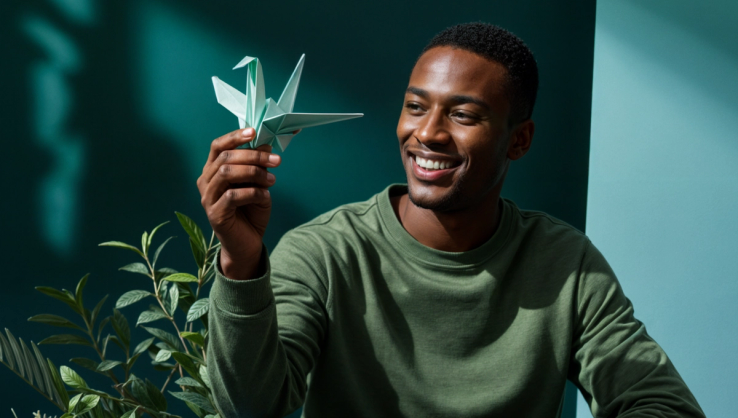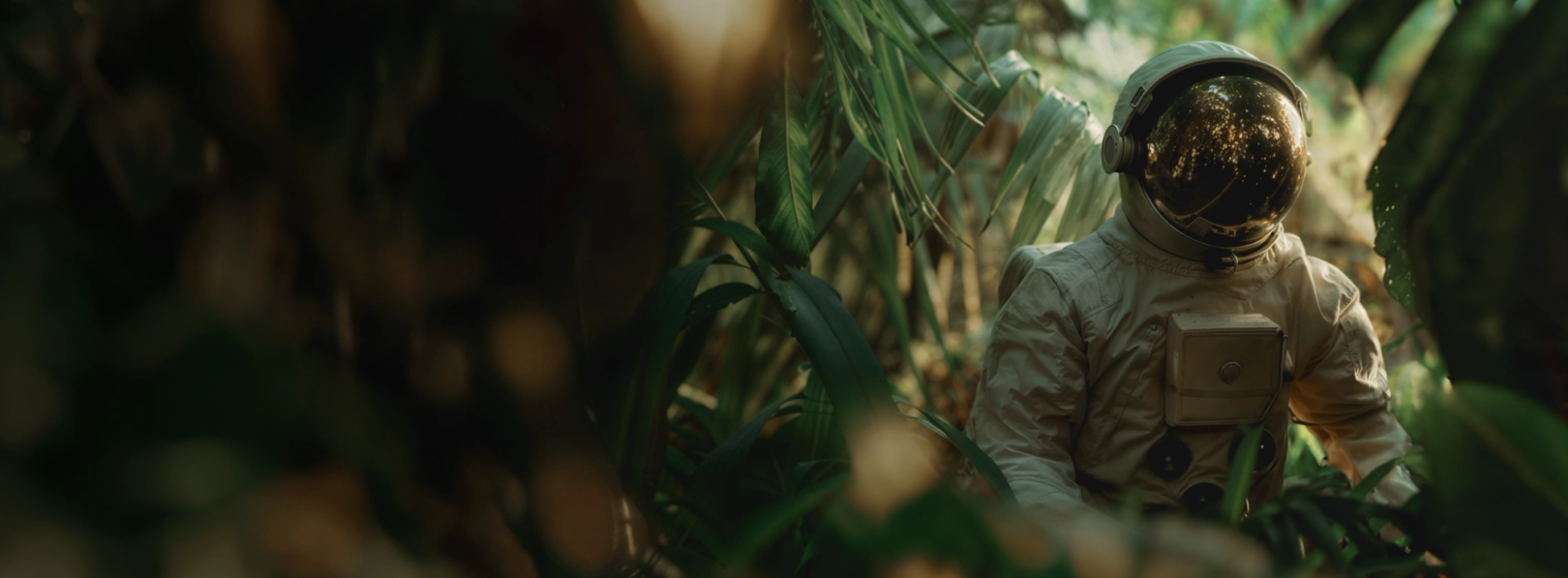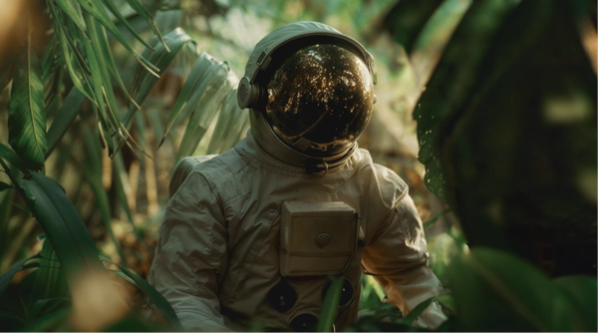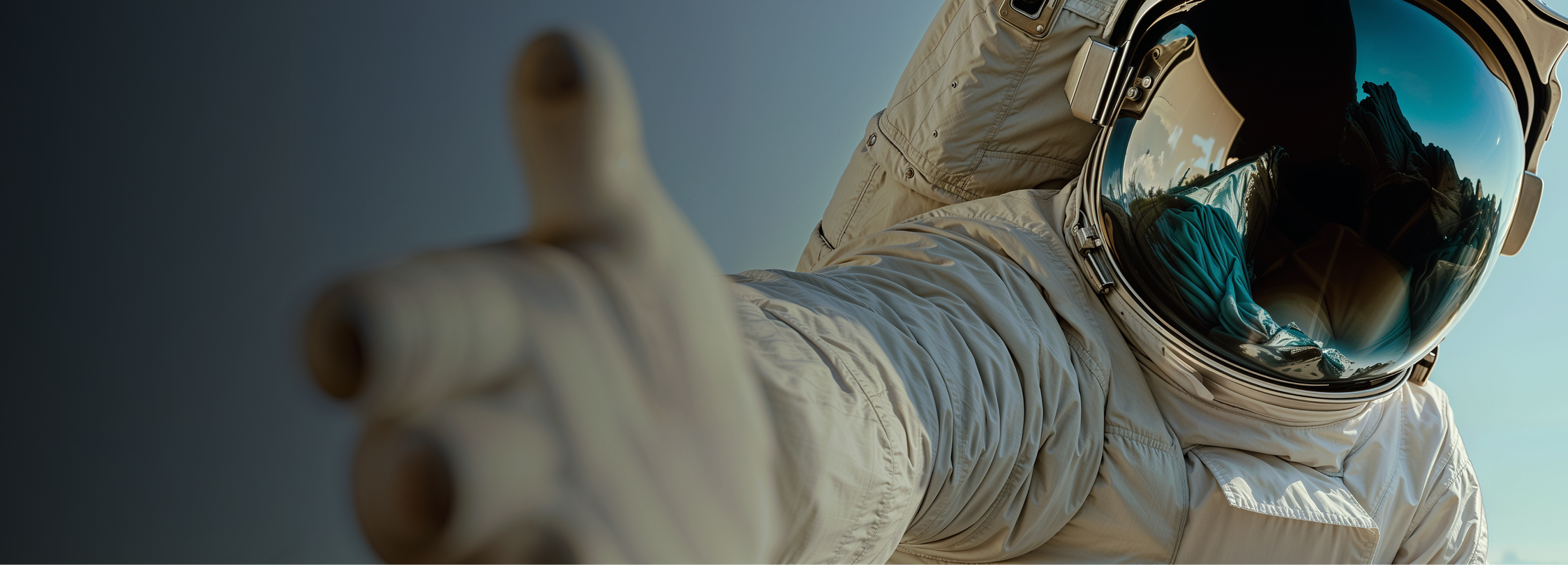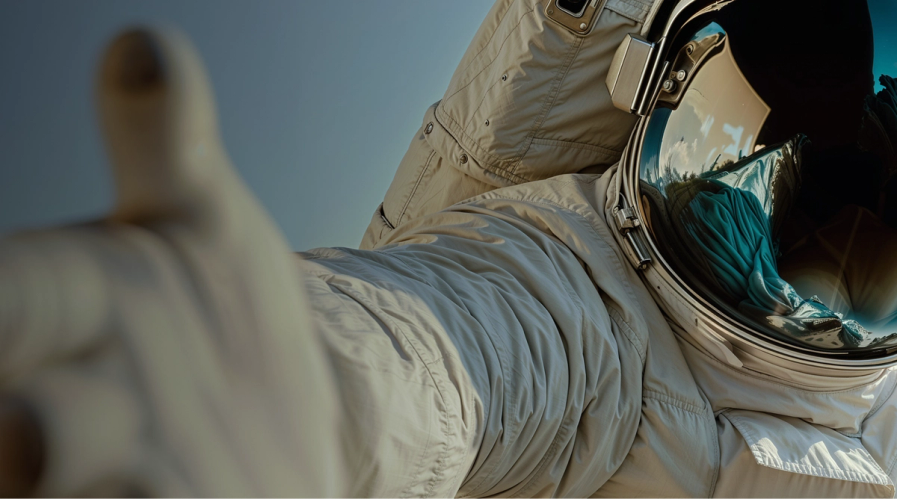
Your Creative AI Copyright Questions, Answered
Published 29 Feb, 2024
There’s no sense in using a tool to make work more efficient if it causes a lawsuit, right? This is a concern a lot of people have about using AI in creative work. Put those fears to rest and learn everything you need to know about AI copyright: When it’s okay to use AI-generated artwork, when you shouldn’t and what the risks and benefits are.
“What about copyright infringement?”
Many people ask themselves this question when they consider using AI for creative work. And the next logical question is, “What about copyright protection for me?”
AI copyright law is straightforward, but far from simple.
No one wants to be sued for copyright infringement because they used AI images in their latest campaign, even in good faith. Likewise, no one wants to spend time and money on creative work their competitors would be free to steal and use for themselves.
So, consider this your introduction to using AI responsibly: When to use it, when not to, and how to ensure any generative AI creative work you authorize won’t open you up to issues.
Can You Copyright AI Art?
In short: Yes, sometimes. Let me explain.
While the legal landscape of AI copyright is fluid, the current position of the U.S. Copyright Office states copyright ownership is only possible for works “created by a human being.”
This position was further reinforced in the famous “monkey photographer” case of Naruto v. Slater. An unmanned camera was set up on a tripod and a monkey (Naruto) came along and took a selfie which immediately went viral.
The photographer tried to assert ownership of the photo, but animal rights organization PETA took the claim to court, aiming to prove the true copyright holder was Naruto, the monkey, for having pressed the shutter and actually taking the photo. The court declined to grant copyright to Naruto on the basis that animals are not human beings, and therefore not entitled to copyright ownership.
The infamous selfie remains in the public domain:
Source: The New York Times
This case forms the basis of most AI copyright decisions today by reinforcing that only humans can author work protected by copyright.
However, there is a way to copyright AI-generated creative work: If a human being modifies an AI-generated result, meaning it’s not a direct output from an AI design tool. (More on this a little later on.)
Who Owns the Copyright to AI Art?
The U.S. Copyright Office states that as a category, AI-generated content is not entitled to copyright protection unless there is proof of “human involvement in the creative process.”
Right, but how much human involvement counts?
“It depends.”
It’s the answer you don’t want to hear, but it’s the truth.
To obtain copyright of an image, you need to be able to prove without a doubt that your human creative decisions led to the output. These could be about the composition, lighting, colors, structure and more.
The courts may still disagree, though arguments have been made that by making these creative decisions, AI art generation apps become nothing more than an artist’s tool, like a camera to a photographer or a brush to a painter.
The current legal landscape for AI copyright
Though there aren’t many cases in the design industry to reference yet, there have been a few decisions about AI-generated artwork we can look to for guidance.
For example, a recent case about the comic book Zarya of the Dawn clarified the copyright office’s position by not granting copyright protection to the comic’s images, since they were AI-generated with text prompts in Midjourney.
However, the office did grant the comic book’s creator copyright protection for the name of the work, the arrangement of the pages, and key storyline—similar to the standard copyright protection offered to media works, except for the lack of image protection.
In these cases, obtaining partial copyright of AI creative work is possible. For full copyright, every step must be the result of human authorship.
What About AI Art Copyright Infringement?
Protecting your creative assets is one important side of AI copyright, but the other is ensuring you’re not exposing your company to legal risks by infringing the copyright of others, even unintentionally.
The U.S. Copyright Office allows for the partial use of copyrighted materials under its fair use guidelines. This means using portions of a copyrighted work—such as a quote or visual element referencing a recognizable brand—for certain purposes, like media commentary or reports.
Fair use in an AI world
Since the raw output of generative AI isn’t afforded copyright protection, fair use doesn’t apply.
For example, in the case of Zarya of the Dawn mentioned above, you could use the AI art images from it in your next marketing campaign. They’re in the public domain.
That said, should you? On a moral integrity basis, probably not. Even if they aren’t copyrighted, others may recognize them as being from Zarya of the Dawn and form a negative opinion of your brand if you start plastering them all over your marketing.
Even if no one knows where the images are from, it will always be a better use of your time and money to create something new that strategically enhances your brand—and can be legally protected—than to copy others.
How Can You Protect AI-Generated Art?
When considering the use of generative AI, it's important to be intentional about your objectives. If you're optimizing for efficiency, then use AI in the knowledge that you might not receive full copyright protection. However, if copyright is a priority then a human must be the author of the work. In this context, it's important to find a partner that will work with you to achieve your objectives and give you full transparency and control over the process.
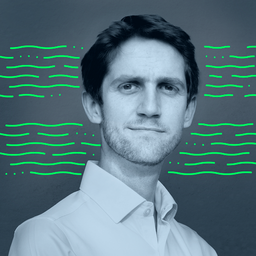
As mentioned before, the only way to protect AI-generated art is for a human to change it enough so that the final result is a derivative work capable of independent copyright protection. Or, at the very least, the human may claim partial copyright on the parts of the image that they created.
Of course, you’ll also want to avoid reproducing recognizable characters or brand elements.
For example, Coca-Cola has featured ads containing polar bears for decades, but they don’t own a copyright on the actual image of a polar bear since that’s not possible.
Still, Coca-Cola won a 1995 copyright infringement case where another beverage company featured a polar bear and a soda bottle. In that case, it wasn’t just the use of the polar bear or the soda bottle individually that was deemed to be infringement, it was the overall presentation of them together.
For this reason, you can’t only look at the small elements of your AI art. Take the entire work or campaign into context to determine if you’re at risk of infringing others.
Better yet, for full security, work with a design partner that’s transparent about exactly how they use AI in design and ensures AI is never used when you require full protection under current copyright law—like Superside.
Notable AI Copyright Cases
To better understand how all these ifs and buts apply, it’s helpful to look back at notable AI copyright cases. Bear in mind, however, that the following cases come from the art world and may not translate directly to the creative and design industry.
That said, these cases are helpful to understand the court's broad leanings when it comes to AI content.
1. The Théâtre D’opéra Spatial AI Copyright Case
Source: The New York Times
We covered how you can obtain copyright on work produced by AI as long as it’s been sufficiently modified by a human. Importantly, to qualify for full or partial copyright protection, the registrant must disclose how they used AI to produce the work. That includes all the steps taken afterward to put that “human touch” on it, as well as disclaiming the AI-generated components of the final image in the copyright claim.
The court denied the copyright of the Théâtre D’opéra Spatial, an image that won the Colorado State Fair’s annual fine arts competition, because the registrant, Jason M. Allen, wouldn’t agree to disclaim the AI-generated components in the image. Had Mr. Allen been able to prove how much editing he did in Photoshop to the raw AI output, and filed for copyright on those elements only, he likely would have been successful.
2. The Zarya of the Dawn AI Copyright Case
Source: U.S. Copyright Office
Kristina Kashtanova, creator of comic book, Zarya of the Dawn, applied for full copyright protection but was only granted partial protection. The U.S. Copyright Office gave her copyright of the text content, arrangement and layout of the comic book, but crucially, not its images.
The reason? Because these images resulted from text prompts in Midjourney and were either edited very little, or the court couldn’t determine the extent to which they were modified after being produced by Midjourney.
Interestingly, in this case, Ms. Kashtanova was originally granted full copyright protection because she hadn’t disclosed that she used AI in any part of the comic book. Later, the Copyright Office found social media comments where she mentioned creating the images with Midjourney, which prompted the Office to cancel her original copyright and reissue it to exclude the images.
This case shows how taking the time to edit AI-generated images is crucial to obtain copyright protection of your work, and the importance of properly disclosing any AI use to the U.S. Copyright Office.
3. The Thaler v. Perlmutter AI Copyright Case
Source: Center for Art Law
This August 2023 appeal attempted to grant copyright ownership not to a person, but to an AI tool itself. Stephen Thaler created an AI art algorithm he calls the Creativity Machine, which then produced a piece of art called A Recent Entrance to Paradise. He tried to file copyright protection for it in 2019, which was rejected due to the ‘absence of human authorship.’ Thaler was seeking copyright ownership for the Creativity Machine, and also himself by extension as the (human) owner of the AI algorithm.
The case goes back to the root of authorship. Who or what counts as an author? The court discovered the term “author” was not explicitly defined as being human-only anywhere in the Copyright Act or the Constitution, which could have opened up this case for approval and drastically changed the AI copyright landscape.
However, after going back through copyright law from 1909 to the present, the court eventually found the image ineligible for copyright protection. Referencing cases like the Naruto v. Slater “monkey selfie,” they further reinforced that copyright cannot be granted to “non-human produced works.”
Both the Naruto and Thaler decisions firmly define that an author = a human being, which continues to be an important distinction in AI copyright case law.
3. Under Armour v. the Court of Public Opinion
When Under Armour launched its first-of-a-kind AI-powered sports commercial, a failure to properly credit the director of a clip used in the ad spurred controversy instead of accolades.
The ad, featuring boxer and UA spokesperson Anthony Joshua, was created without shooting any new footage of the athlete, who was busy training for an upcoming event. Under Armor and the production company that developed the ad have been training AI to generate new content from the brand's existing assets.
Suspicions and tempers flared when the creator of the original footage wasn’t cited in an Instagram post announcing the ad. Even though Under Armour had secured the proper rights and permissions, the debate over creator intellectual property rights overshadowed the ad itself.
Rather than celebrating a breakthrough, there was only a breakdown in trust.
Superside’s Approach to AI-Enhanced Creative
As a design services company, how is Superside approaching AI? Great question.
Innovation + transparency
- First off, we believe in using AI in design combined with our top creative talent to deliver more value to our customers. In fact, through our pilot program for AI-enhanced creative, we’ve found we can deliver projects 30-60% faster.
- But we also believe in being fully transparent about AI with our clients. We never use AI without your approval and always ensure you’re aware of exactly when we’re using it, so that you can make informed decisions about potential AI copyright risk.
- With our AI-enhanced creative services, you get all the efficiency of AI and all the creativity of our humans layered on top.
Here are some answers to common questions about using our AI-enhanced creative services:
Can we use AI-generated creative externally and internally?
Yes, you can use AI-enhanced creative assets anywhere. Just be sure you understand what copyright protection you have, or don’t have, on a specific asset before using it.
Can our competitors copy our work/concepts?
This depends on whether a piece is copyright-protected or not. If you have full copyright protection, then no, your competitors cannot legally copy you. If they do, you can pursue legal action.
For raw AI output that’s not protected by copyright, there is no law against your competitors copying that work and using it in their own campaigns. This is why it’s important to use AI art for the right reasons, and ensure you have copyright ownership of any assets that are critical to your brand identity.
If it’s not critical to your brand, using uncopyrightable AI art may still be fine. It’s similar to using stock photos—many brands can use the same asset in different ways.
Is there a way we can prove this creative belongs to us?
Derivative work is the middle ground. These must be defended in court if they are challenged, with the defendant needing to prove sufficient human creativity was added to the piece.

✅ If a human being made it, you have copyright.
❌ If AI did all the work, you don’t have copyright and can’t prove it belongs to you.
How will our data be used and stored?
Superside handles personal data in accordance with applicable state and federal laws. We ensure names, email addresses and other identifying information is removed before use in AI text prompts. Additionally, our prompts aren’t incorporated into the data used to train large AI models.
How Should You Use AI in Creative Work?
At the end of the day, the answer to this question will depend on your company’s policies and the level of copyright protection you require for any particular piece of creative work.
As a rule of thumb, you may find it best to use AI in instances where you don’t need stringent copyrights, like for ad campaigns, social media creative or illustrative elements in a presentation rather than, say, for a logo.
And don’t worry, with Superside, you’ll always be in charge. You can opt in or out of AI usage on creative projects at any time.
Please note: This article is for informational purposes only and should not be construed as legal advice.
Michelle is a SaaS expert who loves digging into the technical side of creativity. She’s worn many hats during her decade in agencies, from project manager to brand strategist, copywriter and social media strategist, and worked across a wide variety of clients (though tech is her jam!). She loves to put the sass into SaaS content… and now CaaS. Connect with her on LinkedIn and send her a pic of your dog (really, she’ll love it).






